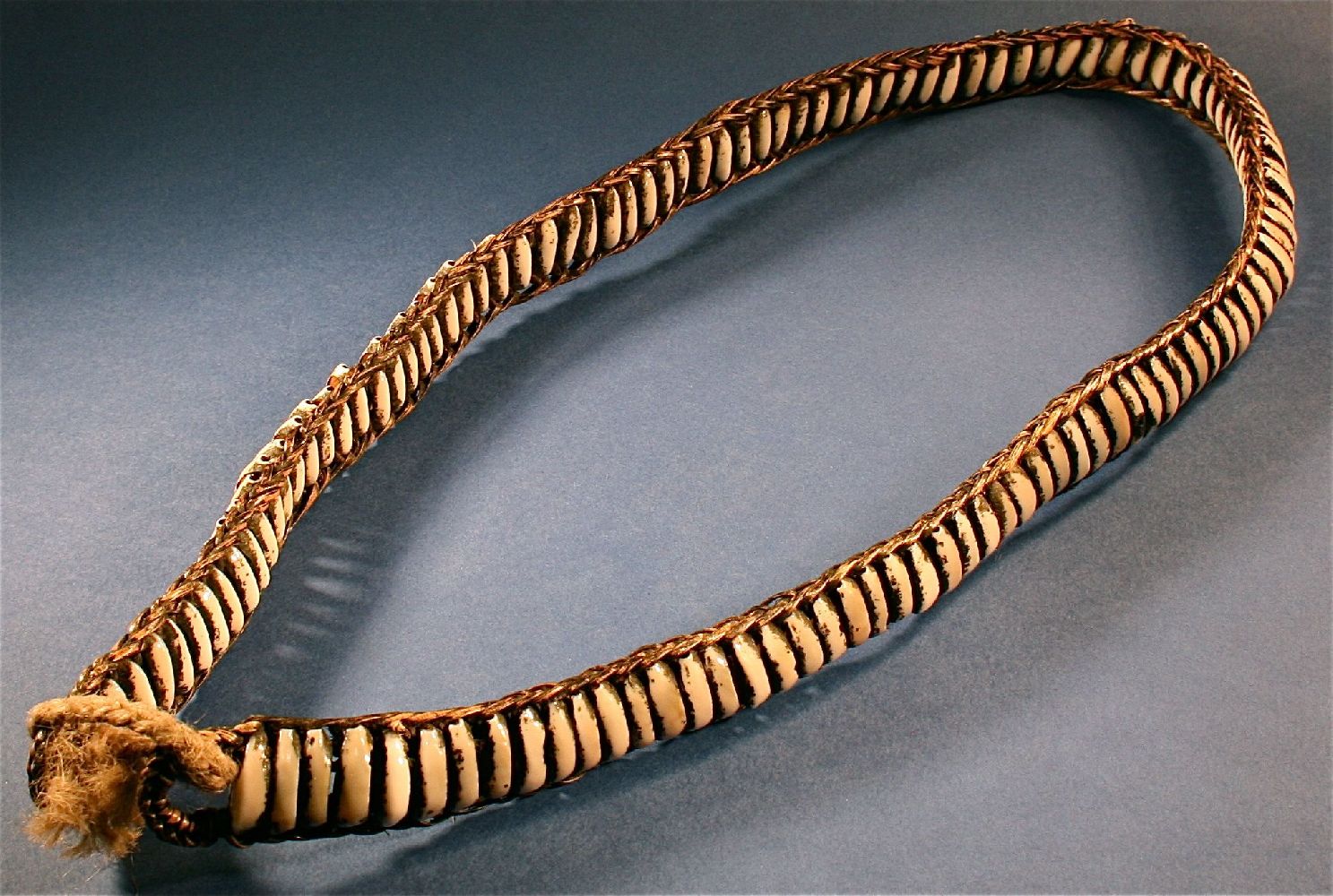

Title: Shell Money Woven Belt Tribal Art From The Oceanic Philippines
Shipping: $29.00
Artist: N/A
Period: 20th Century
History: N/A
Origin: Southern Asia > Philippines
Condition: Museum Quality
Item Date: 1900 to 1940
Item ID: 5556
Ceremonial belt of ground shells. This is one of the most highly prized heirlooms, from the Philippines circa the 20th century. The fashionable Tribal belt is comprised of 116 cone shells manually ground and woven. These shells are fastened end on end. In the Philippines, this kind of work is legendary for its inventiveness and fineness. The belt is worn only by men of the social elite class. Their use is limited to festive occasions such as marriage, funeral rites, successful headhunting raids, and dances. We are committed to enhancing our customers’ lives by discovering creating and pointing out only the best art we can find in the world today. We Are Taste-Makers, Art Advisers & Consultants.
Filipino tribal fashion refers to the traditional clothing and adornments worn by indigenous peoples in the Philippines. These tribes, also known as Lumad or Indigenous People, have a rich cultural heritage and their clothing and adornments reflect this. Traditionally, Filipino tribal clothing is made from natural materials such as bamboo, hemp, and abaca (a type of banana leaf). The clothing is often handwoven and adorned with intricate patterns and designs. The designs, colors and patterns used in the clothing and adornments often have significant cultural and symbolic meaning. For example, the T'boli people of Mindanao are known for their intricate and colorful handwoven textiles, which are often adorned with geometric patterns and symbolic motifs. The Kalinga people of the Cordillera region are known for their intricate tattoos, which are often used to tell stories and convey cultural and spiritual beliefs. Tribal fashion is also known for its accessories like headdresses, bracelets, earrings and necklaces, these are made of various materials like shells, seeds, beads, and metal. These accessories are also known for their intricate designs and patterns, and they also have cultural and symbolic meanings. Today, tribal fashion is becoming more popular among Filipinos, and many contemporary fashion designers are incorporating traditional tribal elements into their collections. This has helped to preserve and promote the cultural heritage of the Philippines, and it has also brought attention to the importance of supporting and preserving the traditional practices and livelihoods of indigenous communities.
Link: http://en.wikipedia.org/wiki/Art_of_the_Philippines
In the early 19th century, wealthier, educated Filipinos introduced more secular Filipino art, causing art in the Philippines to deviate from religious motifs.
Before Spanish colonization, native Filipinos weaved using fibers from abaca, pineapple, cotton, and bark cloth. Textiles, clothes, rugs, and hats were weaved. Baskets were also weaved and used as vessels of transport and storage, and for hunting. These baskets were used to transport grain, store food, and catching fish.
Native Filipinos created pottery since 3500.
Filipino pottery had other uses as well. During the Neolithic period of the Philippines, pottery was made for water vessels, plates, cups, and for many other uses.